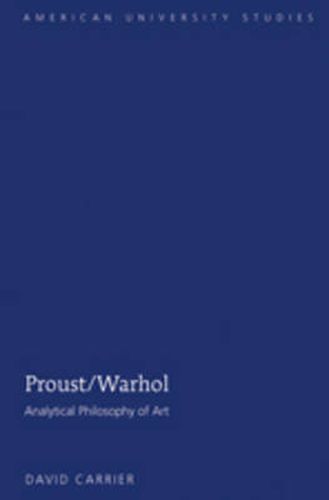Readings Newsletter
Become a Readings Member to make your shopping experience even easier.
Sign in or sign up for free!
You’re not far away from qualifying for FREE standard shipping within Australia
You’ve qualified for FREE standard shipping within Australia
The cart is loading…






Two of the most important modernist artists, Marcel Proust and Andy Warhol, also developed aesthetic theories. Proust presents imaginary artists - a composer, a painter, and a novelist. Warhol made paintings and sculptures; created art history writing, fiction, and films; and sponsored a rock group. Warhol most likely never read Proust, but because their ways of thinking contrast dramatically, much can be learned about both men’s art by comparing: the imaginary painting described by Proust to Warhol’s Marilyn Diptych; the ways that Proust and Warhol understand art-making; how Proust and Warhol define art; and the ways that Elstir’s studio differs from Warhol’s factory. Also discussed is the relationship of their homosexuality to their art. Proust/Warhol: Analytical Philosophy of Art employs three key intellectual tools: the aesthetic theory of Arthur Danto, the account of Proust by Joshua Landy, and the analysis of the art of living by Alexander Nehamas. Proust/Warhol concludes with a discussion of an issue of particular importance for Warhol, the relationship between art and fashion.
$9.00 standard shipping within Australia
FREE standard shipping within Australia for orders over $100.00
Express & International shipping calculated at checkout
Two of the most important modernist artists, Marcel Proust and Andy Warhol, also developed aesthetic theories. Proust presents imaginary artists - a composer, a painter, and a novelist. Warhol made paintings and sculptures; created art history writing, fiction, and films; and sponsored a rock group. Warhol most likely never read Proust, but because their ways of thinking contrast dramatically, much can be learned about both men’s art by comparing: the imaginary painting described by Proust to Warhol’s Marilyn Diptych; the ways that Proust and Warhol understand art-making; how Proust and Warhol define art; and the ways that Elstir’s studio differs from Warhol’s factory. Also discussed is the relationship of their homosexuality to their art. Proust/Warhol: Analytical Philosophy of Art employs three key intellectual tools: the aesthetic theory of Arthur Danto, the account of Proust by Joshua Landy, and the analysis of the art of living by Alexander Nehamas. Proust/Warhol concludes with a discussion of an issue of particular importance for Warhol, the relationship between art and fashion.